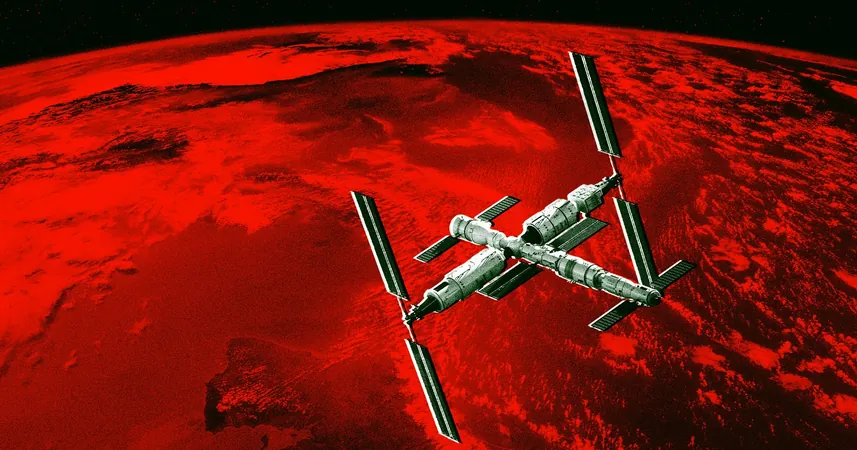
New Microbe Thrives in Space: Unseen Bacteria Discovered on China's Tiangong Station
2025-05-20
Author: Ken Lee
Unveiling the Unknown
In an astonishing breakthrough, scientists have discovered a mysterious microbe aboard China's Tiangong space station that has never been observed on Earth. This revelation, published in the International Journal of Systematic and Evolutionary Microbiology, could reshape our understanding of life beyond our planet.
Introducing Niallia tiangongensis
Named after the space station itself, the newly identified microbe, Niallia tiangongensis, represents a unique strain of earthly bacteria that has evolved specifically for extraterrestrial conditions. Researchers from the Shenzhou Space Biotechnology Group and the Beijing Institute of Spacecraft System Engineering conducted the study, highlighting the microbe's remarkable adaptations.
This resilient organism exhibits a remarkable ability to withstand oxidative stress and recover from radiation damage. Moreover, it has developed a technique to utilize gelatin as a source of nitrogen and carbon, enabling it to create a protective shield against harsh environmental factors.
Potential Risks and Benefits
While the safety of this microbe for astronauts aboard the space station remains uncertain, current related strains are generally viewed as non-pathogenic. However, caution is warranted, as one of its Earth-based relatives can cause sepsis in immunocompromised individuals. Understanding the implications of Niallia tiangongensis could potentially enhance the health and safety measures for astronauts on long missions.
As the researchers emphasized, "Understanding the characteristics of microbes during long-term space missions is essential for safeguarding the health of astronauts and maintaining the functionality of spacecraft." This insight could lead to better preparations for future space travelers.
A Trend of Spaceborne Microbes
Niallia tiangongensis is part of a broader phenomenon where microbes adapt to life in space. The bacterium is a cousin of Niallia circulans, a species typically found in soil and sewage. The samples that led to this discovery were collected during the Shenzhou-15 mission in 2023, adding to the mission's diverse research activities, which even included ping-pong matches in zero gravity.
This discovery follows last year's revelations by NASA, where researchers found that drug-resistant bacteria aboard the International Space Station had mutated into previously unseen forms. These space-adapted microbes demonstrate an impressive ability not only to survive but to assist other microbial life in thriving under the conditions of space.
The Future of Space Microbes
As humanity ventures further into the cosmos, the discovery of Niallia tiangongensis raises intriguing questions about microbial life beyond Earth. Researchers continue to stress the need for comprehensive studies on space-adapted microorganisms, as understanding their adaptations could play a critical role in ensuring astronaut health on voyages beyond our atmosphere.



 Brasil (PT)
Brasil (PT)
 Canada (EN)
Canada (EN)
 Chile (ES)
Chile (ES)
 Česko (CS)
Česko (CS)
 대한민국 (KO)
대한민국 (KO)
 España (ES)
España (ES)
 France (FR)
France (FR)
 Hong Kong (EN)
Hong Kong (EN)
 Italia (IT)
Italia (IT)
 日本 (JA)
日本 (JA)
 Magyarország (HU)
Magyarország (HU)
 Norge (NO)
Norge (NO)
 Polska (PL)
Polska (PL)
 Schweiz (DE)
Schweiz (DE)
 Singapore (EN)
Singapore (EN)
 Sverige (SV)
Sverige (SV)
 Suomi (FI)
Suomi (FI)
 Türkiye (TR)
Türkiye (TR)
 الإمارات العربية المتحدة (AR)
الإمارات العربية المتحدة (AR)